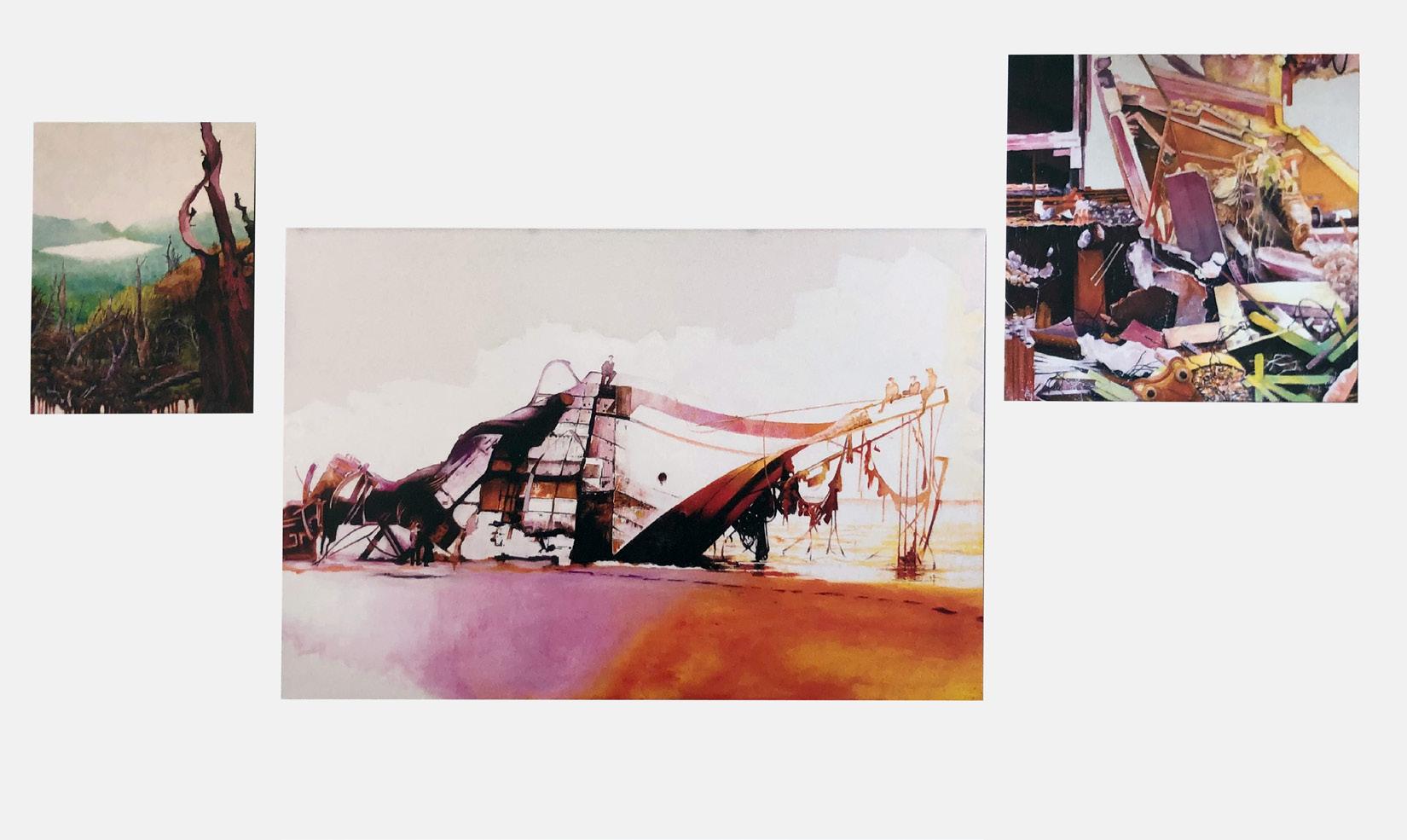SABINE BACHEM
Sabine Bachem is a figurative oil painter based in Germany. Brushing up against Surrealism and Magical Realism, Bachem’s work is dreamy yet full of dramatic pathos. Her paintings weave powerful narratives where literature, mythology, and symbolism intertwine. Subjects of exploration have included the seven deadly sins, Dante’s circles of hell, and John Milton’s epic poem Paradise Lost. Bachem’s versatile thematic inquiry is paired with a curiosity for pushing the boundaries of traditional supports and mediums: cutting holes of various shapes into linen canvases, hanging paintings unstretched from a rod, or painting over old prints.
Her latest work is a series of triptychs exploring the correlation between culture and nature. The panels form a recurring narrative that places images of idealized natural beauty alongside prevaricating human interventions. When the natural and artificial clash against each other, death and destruction ensue, as symbolized by piles of debris, shipwrecks, or close-ups of animal and human skulls. She says “My artistic preoccupation is a continual engagement with the structure of the human mind that, confronted with the peripheral environment, automatically begins to order, constructing an artificial, but for the human psychology comprehensible pattern. This process of ordering is a mechanism which bridges the passage from the alien to the familiar, from fear to the comfort zone, from nature towards culture.”
Bachem was trained at the Steiner Waldorf School in England, where her family briefly relocated. A highly prolific painter, she has exhibited her work extensively in Europe and Asia.
 SABINE BACHEM ON
SABINE BACHEM ON





My artistic preoccupation is a continual engagement with the structure of the human mind which, confronted with the peripheral environment, automatically begins to order, constructing an artificial–but for human psychology–comprehensible pattern. This process of ordering is a mechanism that bridges the passage from the alien to the familiar, from fear to the comfort zone, and from nature to culture. In my surrounding environment, I am constantly on the lookout for motives that mirror the human condition, that is, the zone that emerges when culture nudges up against nature.


